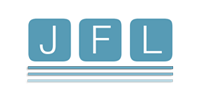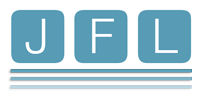This paper covers the humanitarian situation of the internally displaced people (IDPs), camps, health, and education. It also highlights the security situation in the villages and towns located in the north of the Euphrates River in western Deir Ezzor that are held by Syria Democratic Forces (SDF).
The towns and villages held by SDF in the western Deir Ezzor are located from Jazrat Al Bouhmaid village to the villages of Al Hussienyya and Al Salheyya including the villages of Abo Khashab and Jarwan until the administrative border of Al Hasaka province.
All of the abovementioned areas are controlled by SDF except for Al Salheyya and Al Hussienyya, that are held by the Syrian regular forces and their allies.
This report highlights the most important aspects as follows:
First: The Security Condition:
The security condition in the western countryside held by SDF is relatively stable as these areas are away from the frontlines with ISIS, however they witness occasionally some security problems between the populations and SDF, or among SDF factions.
SDF conduct arbitrary arrests in the western countryside areas by the charge of pursuing ISIS members. Yet, many detainees are civilians with no relations to ISIS. JFL researchers reported torture cases for some detainees in SDF jails.
Detention in SDF Jails:
JFL documented the death of two people under torture on June 2018 in SDF jails following one month of detention.
JFL researcher said that a group of SDF members arrested Fahad Ammash Al Naeyf, a 34-year-old pharmacist from Sbaikhan town, Saleh Ahmad Al Yassin, a 57-year-old pharmacist from Mouhassan town, as SDF found a bomb-motorbike in front of Saleh Al Yassin pharmacy.
Well-based witnesses confirmed that the bodies of Fahad and Saleh had signs of blisters due to severe beatings they received.
Fahad Ammash Al Nayef – Credit: Social Media.
Photo was validated by JFL
Saleh Ahmad Al Yassin – Credit: Saleh’s
Planting IEDs and Bombs as a Mean of Terror:
Several areas in the western countryside were exposed to many explosions by IEDs and bomb motorbikes. JFL documented three of them.
A bomb motorbike exploded in Hammar Alali village with no civilian casualties. On September 5th 2018, a motorcycle exploded nearby the religious affairs administration in Hammar Alali village. Witnesses confirmed to JFL that SDF members started to shoot randomly and killed two people, one from Al Bsaira town and the other from Al Salheyya village. JFL reporter confirmed that the killed had nothing to do with the explosion, as claimed by SDF.
JFL reporter said that on September 20th 2018, an IED exploded as it was planted nearby Al Kasra sub-district entrance that targeted Bassem Al Latif, the minister of interior in SDF held areas, as he was no injured. The perpetrator was arrested, he was a former ISIS member.
Jails:
Most jails in SDF held areas west of Deir Ezzor are located in Al Kasra sub-district, along with some in other villages. JFL reporter says the detainees of these jails are ISIS members and people with relationships with Syrian regular forces along with people with different charges.
The number of detainees in Al Kasra jails is about 450 including 70 women, and pregnant ones, along with about 50 children aged between 10 days and 13-year-old.
Some detainees are tortured, especially those who are charged by being affiliated to ISIS. There is no healthcare inside the jails. Some diseases outbreak inside those jails such as measles, diarrhea, malnutrition, scab, and hepatitis.
Spread of Checkpoints:
The SDF checkpoints are located as there is no village without the presence of at least of checkpoint. According to JFL reporter, the checkpoints are located in the western countryside in Al Kasra town, the villages of Jazrat Al Bouhmaid, Jazrat MallaJ, Al Shati, Al Kubar, Al Harmoushia, Al Sawa, Al Zgeiter, Al Hawaej, Mouhaimeeda, Al Hisan, and Al Jeea. The total of these checkpoints is about 17 along with the mobile ones, that are active at night. The high number of these checkpoints causes delay and obstruction of civilians’ movement.
Second: Humanitarian Situation:
Internally Displaced People:
The IDPs in the western countryside of Deir Ezzor are divided into two parts;
- Old IDPs who came to the area about seven years ago and reside in some public institutions buildings and rented houses.
- New IDPs who came to the area in the second half of 2017 following the military campaigns on ISIS. Most of them are from the areas that were recently recaptured by the Syrian regular forces. Most IDPs who came from the Syrian regular forces held areas, especially the youth, prefer not to return to their areas out of fear of arrest, pursuit, or forced conscription. As for the IDPs who fled the areas that were recaptured by SDF, they returned to their areas.
IDPs reside in random camps along with one organized camp, which is Abu Khashab. They also reside in the buildings of public institutions, relatives’ houses, or rented ones.
IDPs, especially the newcomers, depend on humanitarian aid provided by acting organizations. Mostly, the family gets one parcel per month, and sometimes the parcels are delayed for more than two months.
Many organizations are active in the area including relief, medical, educational, and mine action organizations. Some of them focus on raising awareness of women and children, and infrastructure.
The number of the acting organizations is nine, along with some newly established local organizations with limited activities.
Camps:
The irregular camps are located in the villages of Jazrat Al Bouhmaid, Al Milaj, Hawaej Theyab, Mhaimeeda, and Hammar Ali where most IDPs came from the areas that were newly recaptured bySyrian regular forces. These camps suffer from dire humanitarian conditions due to lack of relief.
As for Abu Khashab camp, which is called the regular camp, as the local authority is supervising it and providing it with relief. There about 420 families in this camp, most of them were displaced from the regular forces held areas, along with some Iraqi families.
Some IDPs in Abu Khashab camp told JFL reporter that those who supervise the camp took their official documents in order to prevent them from leaving the camp. They also refused to relocate the camp as complains increased due to lack of water and prevalence of insects and reptile.
The relief provided are limited to bread, water, and some food baskets that are infrequently distributed.
The camp administration dag a duct with depth of 2m around the camp and constructed a rampart, the fact that turned the camp into a sort of detention center.
Third: Roads and Crossing Points:
The Syrian regular forces closed all river crossing points that link between their held areas and SDF held areas, including the most important one which links between the village of Jazrat Al Bouhmaid and Mada’an city, and the other one which links between Al Kasra tonw and Al Shumaiteya/Al Masrab towns. It should be noted that the abovementioned areas are controlled by the Syrian regular forces.
SDF prevented the civilians from reaching the only remaining crossing point that links Hatal village and Deir Ezzor city as the Syrian regular forces killed three SDF members in Jnaina village.
Alongside with the crossing points that are controlled by the military powers on the two banks of the river, SDF and regular forces, there are some irregular crossing points that are used by the civilians in order to avoid going through any regular crossing point due to meticulous searches that result in delay in civilians’ movement.
According to JFL reporter, SDF have instructions to shoot anyone who gets close to the bank of the river as one IDP in Hammar Al Kasra village was shot by SDF when he was fishing.
Fourth: Health Conditions:
In the western countryside of Deir Ezzor, there are four hospitals, including three private ones that are: Hawaej Al Bumasa, Jazrat Al Bouhmaid, and Dar Al Shifa’a. The public hospital is Al Kasra, which provides the emergency aid services along with some surgical ones such as general surgery, maternity, and orthopedics. Additionally, there is radiology, laboratory, children’ clinic, and midwifery. The hospital is supported by the local council and MSF. There is one clinic in Mhaimeeda village, which is considered the sole clinic in the area.
Handicap International opened a clinic for physical therapy and providing prostheses.
The most important challenges for the health sector come as follows;
- Unavailability of all specialties due to displacement of many local doctors.
- Severe shortage in some medications, especially for cancer and dialysis.
The abovementioned challenges force civilians to travel to Syrian regular forces held areas in Damascus, Deir Ezzor, or Al Qamishli to receive treatment.
Fifth: Education:
The number of schools that hold classrooms on regular basis is 75 that include about 1000 teachers. The monthly salary of the teacher in those schools is 50,000SYP.
The schools in villages and the outskirts are about 60 starting from Jazrat Al Bohmaid until Shaqra village. There are about 15 schools in the nearby desert areas.
One of the schools in the western countryside that is held by SDF
The education sector suffers from many problems such as;
- The local authorities do not pay the required attention to the education process.
- Unavailability of qualified education staff.
- Lack of basic requirements within the schools such as desks, doors, windows, which lead to diseases for the students, especially that winter is knocking the door.
- Lack of curricula copies as in some classes, only one copy is available.
- Some schools were turned into headquarters for SDF.















